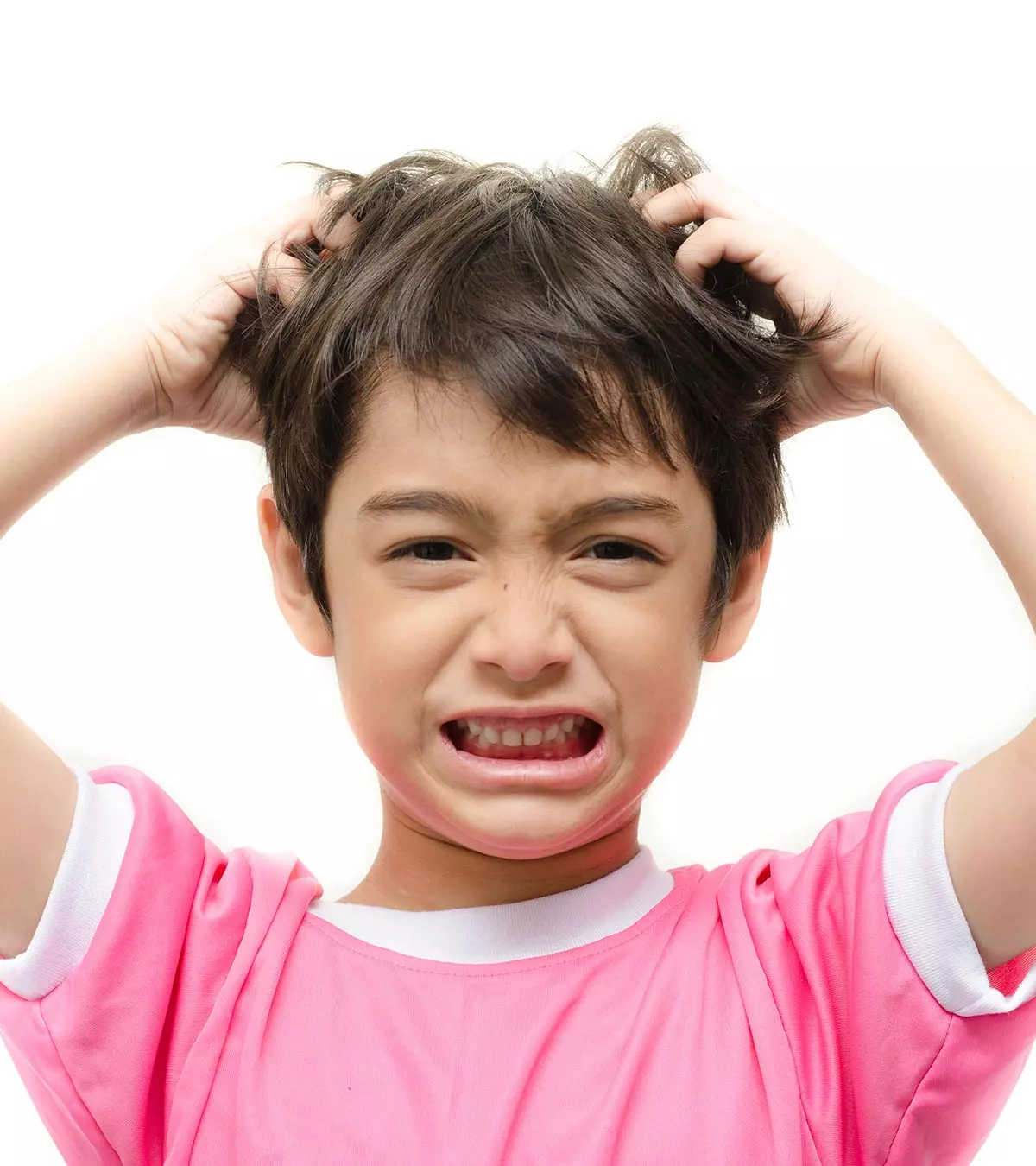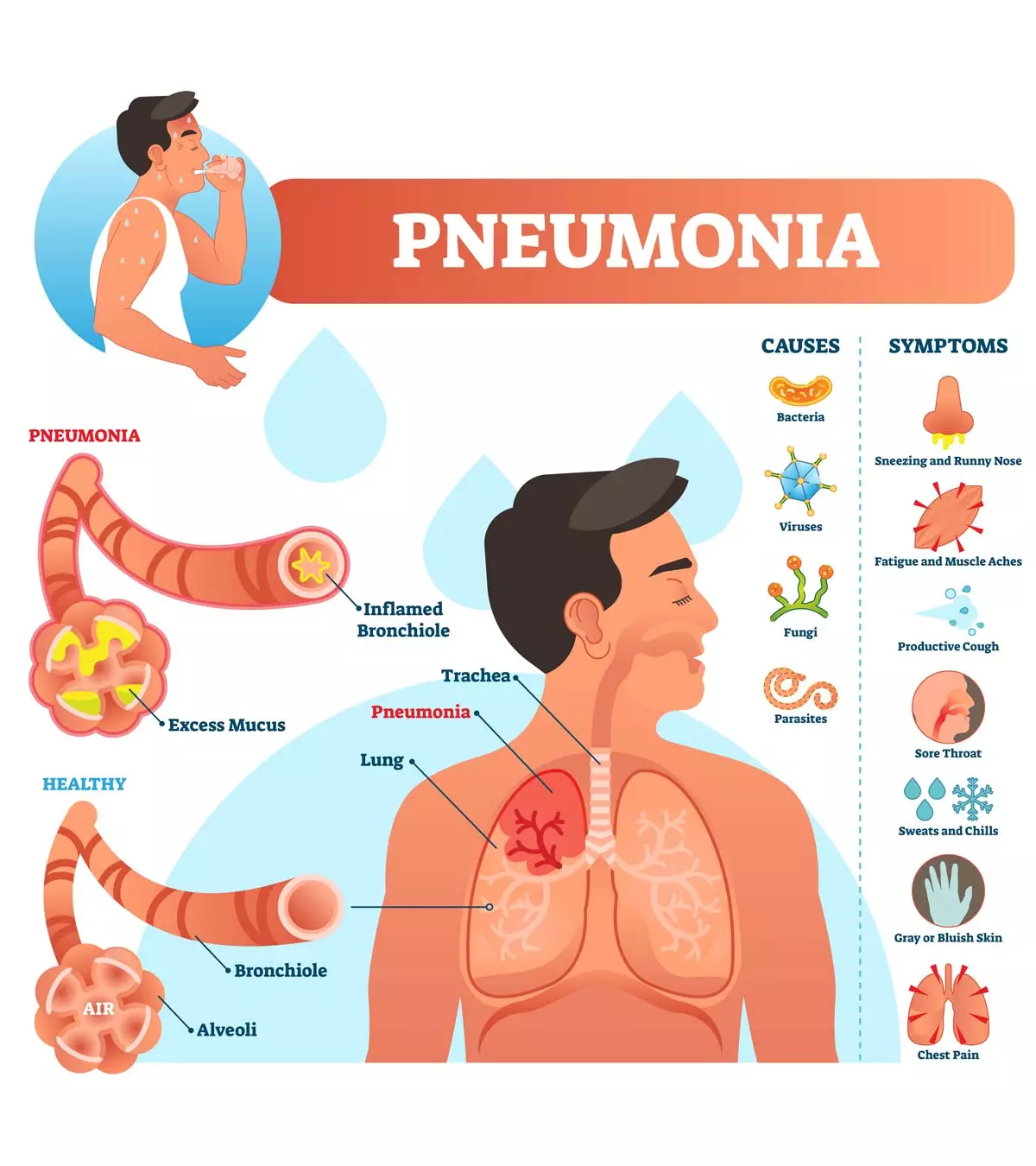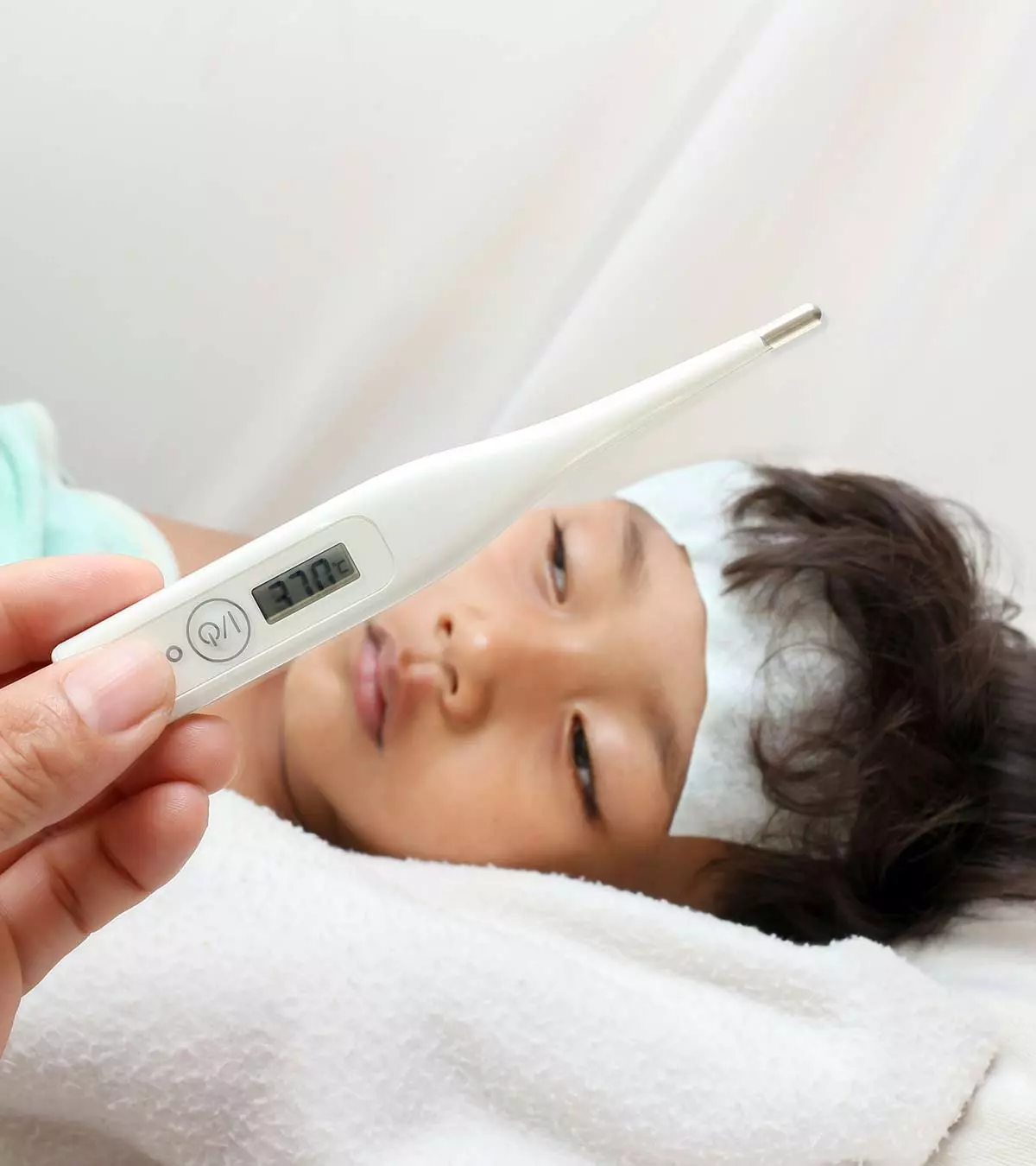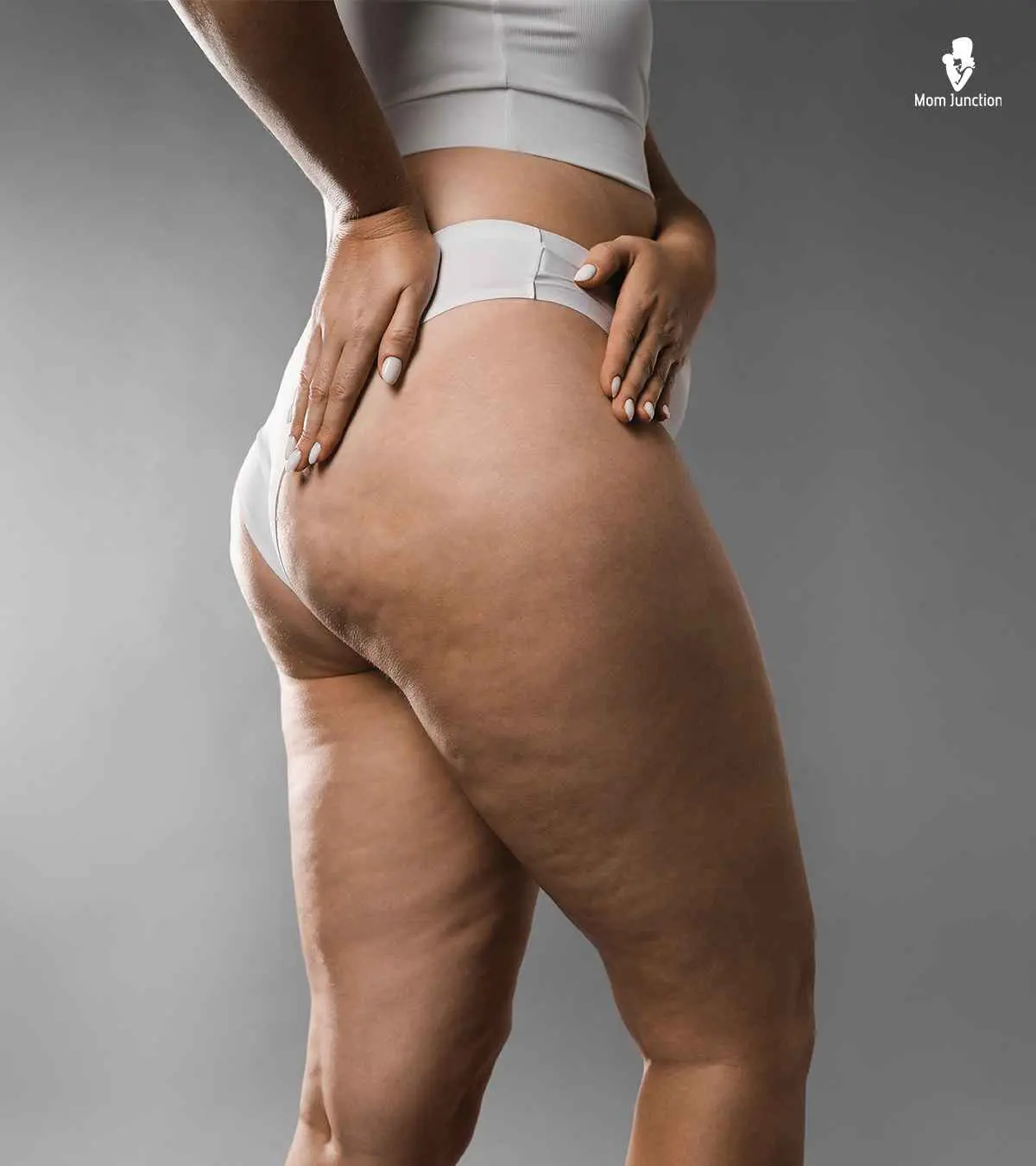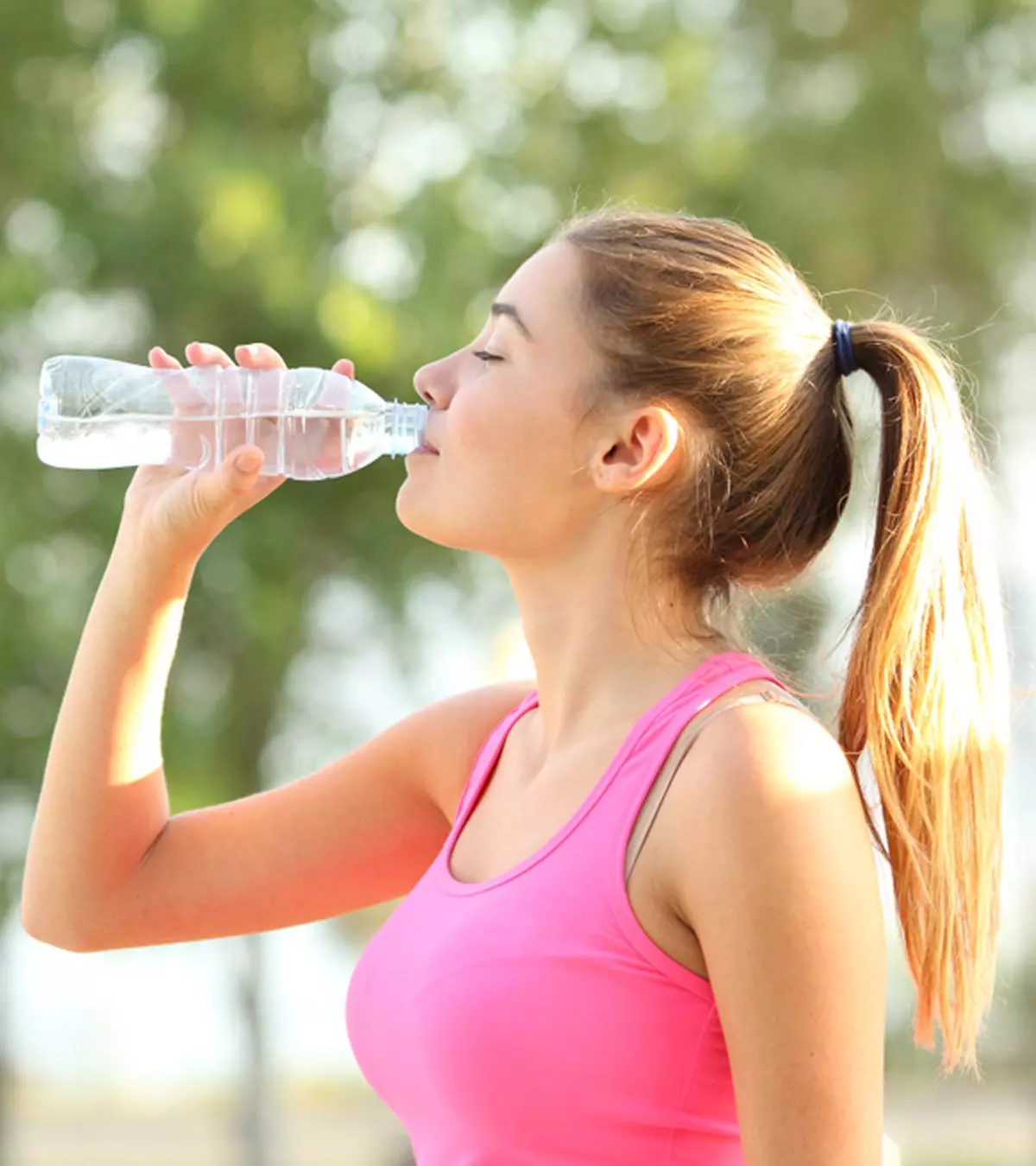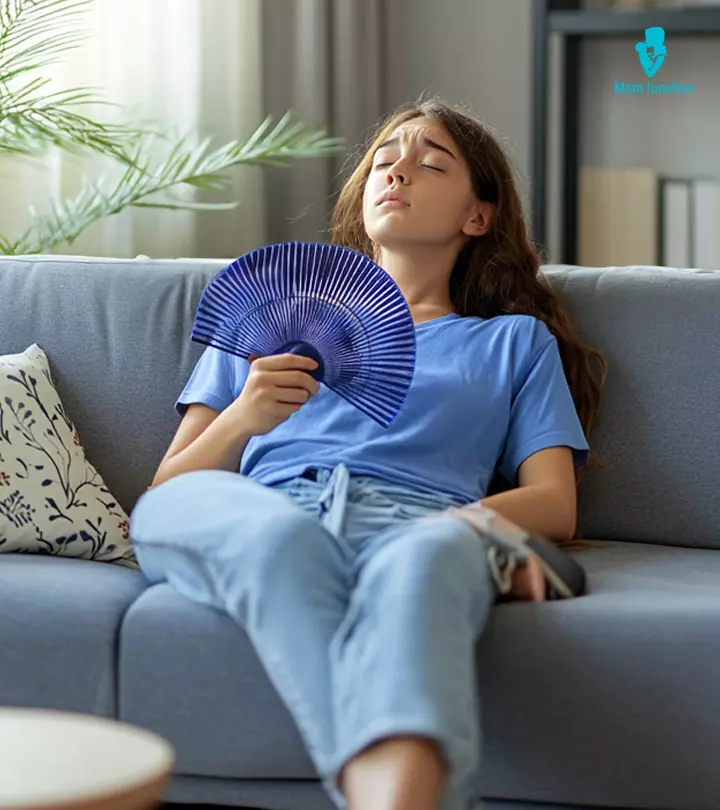
Image: Midjourney/ MomJunction Design Team
Hot flashes in teens may occur due to various reasons. They may complain about sudden, intense warmth (heat) and sweating. This can be temporary and often felt on the upper body, such as the face, neck, and chest. Some may also experience skin reddening (1) (2). The duration and how often it occurs may vary depending on the underlying causes. Some teens may experience hot flashes in the night hours, called night sweats.
Read on to learn more about the causes, related symptoms, and homecare measures for hot flashes in teenagers.
Key Pointers
- Hot flashes may occur in teenagers due to various reasons.
- Symptoms of hot flashes include sudden intense warmth, sweating, and skin reddening.
- Hot flashes can be caused by panic disorder and phobia, hyperthyroidism, primary ovarian insufficiency (POI), and some cancers.
- Other triggers include spicy food, tight clothes, alcohol, caffeine, and certain medications.
- Treatment options for hot flashes depend on the underlying cause and may include medications and hormone therapy.
Can Teenagers Have Hot Flashes?
Hot flashes primarily occur in menopausal women (1).
However, men and adolescents may also experience hot flashes due to various reasons, which may signify an underlying medical condition that needs to be identified promptly.
Infographic: Can Hot Flashes In Teens Be Cured With Lifestyle Changes?

Illustration: Momjunction Design Team
Causes of Hot Flashes in Teenagers

Hot flashes in children and teenagers can be caused by various triggering factors and conditions, which we discuss next.
- Panic disorder and phobia: Adolescents with panic disorder experience recurring and sudden episodes of intense fear or discomfort. The onset of this disorder is usually between the ages of 15 and 19 years. Symptoms can include shortness of breath or feeling smothered, dizziness, faintness, choking, racing heart rate, trembling or shaking, nausea, hot flashes or chills, numbness or tingling sensation, chest pain or discomfort, and fear of dying, losing mind, or losing control (3), (4). A phobia is “an extreme anxiety response toward something that is not causing immediate danger.”
According to the data from the Centres for Disease Control and Prevention, from 2021 to 2022, 10% of children aged 3 to 17 years in the US had been diagnosed with anxiety. Anxiety and phobia can present similar symptoms and limit teenagers’ activities and impact their quality of life (4).
- Overactive thyroid (hyperthyroidism)iA condition characterized by excessive production of thyroid hormones in your body. : This condition causes your child’s thyroid gland to secrete excessive thyroid hormone. Hyperthyroidism or Graves’ disease is characterized by anxiety, irritability, nervousness, excessive sweating, heat intolerance (always feeling warm or hot flashes), decreased or poor school performance, slight tremors, increased heart rate, increased appetite (with or without weight loss), lighter and irregular menstrual cycles in teenage girls, increased frequency of bowel movements, fatigue, and restless sleep (6).
- Primary ovarian insufficiency (POI): This condition is defined as the dysfunction or depletion of ovarian follicles before the age of 40 years. In other words, POI is a premature ovarian failure in female adolescents and is often caused by chromosomal abnormalitiesichromosomal abnormalities
meaning: Genetic conditions caused by either numerical or structural problems of a chromosome. or damage caused due to chemotherapyiTreatment with medications to limit the growth of cancer cells by killing them or stopping their multiplication. or radiation therapy for cancer (7). The ovaries of women and girls with POI don’t make enough estrogen, which can hinder growth and development. The most common symptoms are abnormal menstrual cycle, such as oligomenorrhea (menstruation cycle longer than 35 days) or polymenorrhea (menstruation cycle is less than 21 days long) and lack of breast development, however hot flashes or vaginal dryness (vaginal atrophyiA gynecologic condition, causing vaginal lining to get drier and thinner. ) may also occur (7).
Teenagers can often miss symptoms of primary ovarian insufficiency as they are similar to that of menopause.
- Cancer: Night sweats can be an early symptom of a few types of cancers, such as neuroendocrine tumorsiRare and abnormal growths from the neuroendocrine cells that can occur anywhere in the body. , pheochromocytomasiA rare tumor growing in the adrenal gland, resulting in the production of too much of the hormones epinephrine and norepinephrine. (8), and lymphomaiCancer that originates in the lymphatic system. . However, hot flashes in the night are not the only symptoms. Others can include fatigue, fever, and weight loss (9). In any case, a proper diagnosis by the doctor is essential before determining this.
- Other triggers: Amy Horwitz, a family medicine provider at the Cleveland Clinic says, “What you eat or drink can affect your body in different ways. As your body tries to regulate what you’re putting in it, you may feel warm and sweaty (8).” For example, eating spicy food, drinking hot drinks, wearing tight clothes, smoking, consumption of caffeine or alcohol, stressful situations, being in a warm or closed room, intake of certain medications (side effects), and a few food additives may also cause hot flashes (2). Although, the intensity of response or its absence may vary individually.
A case report published in the American Academy of Pediatrics (AAP) publications highlighted a case of the occurrence of hot flashes in an 11-year-old girl as a side effect of consuming Serenoa repens in a food supplement for the treatment of telogen effluvium (10).
 Quick fact
Quick factCan Puberty Cause Hot Flashes?
After puberty (sexual maturity) and during the rest of the reproductive time in a female, the estradiol level in the ovaries is high. Hence, the body tolerates only 0.5 degrees of variation in the body temperature without activating the compensation mechanism in the central nervous system (CNS). That is the reason why an adolescent’s CNS does not respond to changes in weather with hot flashes.
However, with the decline in estrogen levels, the hypothalamus’ control of the temperature is disturbed, and even a small change in temperature triggers a hot flash (11).
Symptoms of Hot Flashes in Teens
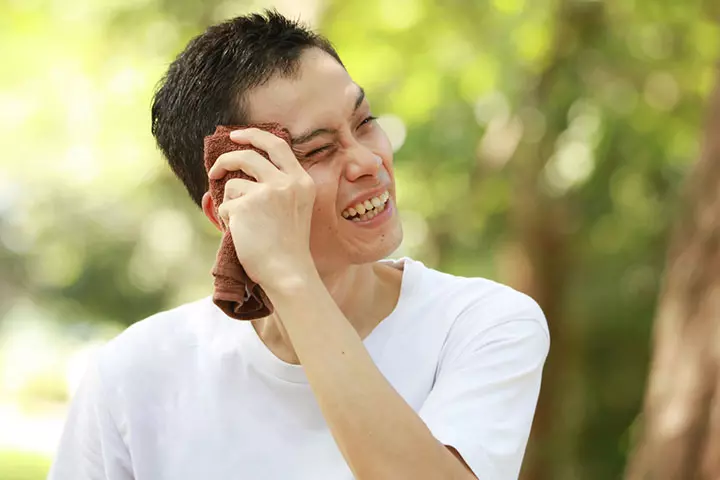
Hot flashes can manifest in various ways, and symptoms may vary from person to person. Depending on the cause or triggering factor, associated symptoms of hot flashes may include the following (1), (2).
- Sensation of heat or skin feels warm
- Skin temperature increases, especially in the fingers, cheeks, forehead, upper arms, chest, abdomen, back, calves, and thighs.
- Flushing (reddening of skin usually around the face, neck, and chest)
- Profuse or excessive sweating on the upper body
- Chills
- Clamminess (sweaty skin)
- Anxiety
- Increased heart rate (pounding sensation)
Early identification of symptoms and their underlying causes is crucial for relieving discomfort and managing hot flashes in teens.
 Research finds
Research findsTreatment for Hot Flashes in Teens

Healthcare practitioners may diagnose the cause of hot flashes based on the description of the symptoms experienced. An evaluation of medical history and other associated symptoms may help identify the triggering factors or underlying conditions.
Treatment of hot flashes in teenagers may depend on the triggering factors or conditions. The line of treatment can include the following.
- Cognitive-behavioral therapy: It is a type of talking therapy that is found to be effective in treating anxiety or panic disorders. The therapy helps your child learn skills and techniques to cope with anxiety, panic, and undesirable thoughts or feelings (12).
- Medications: Healthcare practitioners may prescribe medications along with the therapy. Selective serotonin reuptake inhibitors (SSRIs) and serotonin-norepinephrine reuptake inhibitors (SNRIs) are used in children and adolescents. However, tricyclic antidepressants and benzodiazepines are not so commonly used in children (12).
- Hormonal therapy: According to the American College of Obstetricians and Gynecologists, hormone therapy in female adolescents to treat primary ovarian insufficiency is focused on replacing hormones that ovaries are meant to produce before menopause (7). Therefore, younger women may need higher doses of estrogen than menopausal women. In addition, estradiol and progesteroneiAn ovarian hormone that influences the menstrual cycle and pregnancy. may also be used in hormone therapy for teenage girls once they reach sexual maturity (7).
- Antithyroid medicines: To slow the release of thyroid hormone, healthcare practitioners may suggest antithyroid medicines (13).
 Quick fact
Quick factHome Remedies for Teens Hot Flashes

Besides addressing the causative factor or condition, you may also encourage your child to follow these home-care and lifestyle tips (14).
- Dietary changes: Try and avoid caffeine, spicy food, and alcohol. Eating a well-balanced diet with all nutrients from different food groups can also help your child along with increasing water intake. Avoid food items containing additives (sulphites) that can trigger hot flashes.
- Deep breathing: Encourage your child to do deep breathing exercises for 10 to 15 minutes every day. This can help in preventing anxiety and panic-creating situations. You may also get them to try other self-calming techniques like yoga and meditation.
- Physical activity: Regular physical exercise will help maintain the general well-being of your child.
- Cotton clothes: Light cotton, airy, and breathable clothes can help keep your child feel comfortable, especially during hot weather that can trigger hot flashes.
- Instant relief: Carry a portable fan or stay inside during hot weather and peak sunny hours to protect oneself from sweat (15).
Avoid self-medication for managing hot flashes. If your child experiences recurring hot flashes, schedule a visit with your healthcare practitioner.
Frequently Asked Questions
1. Can dehydration cause hot flashes in teens?
Dehydration may cause a reduction in sweating, which may lead to a rise in the body’s internal temperature to high levels (16). However, there is no association found between dehydration and hot flashes in teens.
2. Can drinking water help with hot flashes in teens?
Drinking cold water as a hot flash starts may help menopausal women (17). If the hot flashes are due to dehydration, drinking cold water may help teens as well.
3. Is it possible for hot flashes in teens to be hereditary?
The exact cause of hot flashes in teens is not known. However, primary ovarian insufficiency (POI) is considered one of the main reasons. The cause of approximately 10% of POI in teens can be traced to autoimmunity or genetic conditions; the cause of the rest is still unknown (18).
4. How long can teens have hot flashes?
Dr. Anna H. Chacon, a board-certified dermatologist from Miami, Florida, says, “The duration of hot flashes can vary greatly from one individual to another. In many cases, hot flashes in teens are temporary and will resolve on their own as hormone levels stabilize. However, if hot flashes persist or are causing distress, it’s important to consult a healthcare provider for further evaluation and potential treatment options.”
Although not common, teenagers can also experience hot flashes due to several reasons. Panic disorder and phobia, overactive thyroid, wearing tight clothes, and being in a warm, closed room are some of the benign causes of hot flashes in teens. Some of these causes can be managed at home, while others may need medical intervention. If your teen has hot flashes without apparent triggers such as warm weather, hot or spicy food, or intense physical activity, seek immediate medical guidance to determine the cause.
Empower yourself with knowledge from this video that talks about the causes, signs, and remedies for hot flashes during menopause.
Illustration: Causes Of Hot Flashes In Teens And Treatment Options

Image: Stable Diffusion/MomJunction Design Team
References
1. Kronenberg, F. Menopausal hot flashes: a review of physiology and biosociocultural perspective on methods of assessment: The Journal of nutrition, 140(7), 1380S-1385S. (2010).
2. Freedman, R. R. Hot flashes: behavioral treatments, mechanisms, and relation to sleep: The American journal of medicine, 118(12), 124-130. (2005).
3. Ollendick, T. H., Mattis, S. G., & King, N. J. Panic in children and adolescents: A review: Journal of Child Psychology and Psychiatry, 35(1), 113-134. (1994).
4. Your Adolescent-Anxiety and Avoidant Disorders: American Academy of Child and Adolescent Psychiatry. (n.d.).
5. Rebecca H. Bitsko et al.;Mental Health Surveillance Among Children — United States, 2013–2019. CDC. (2022).
6. Hyperthyroidism: Children’s Hospital of Philadelphia. (n.d.).
7. Primary Ovarian Insufficiency in Adolescents and Young Women: American College of Obstetricians and Gynecologists. (2014).
8. Why Am I Always Hot?: Cleveland Clinic
9. Night Sweats: International Hyperhidrosis Society. (n.d.).
10. Marco Miroddi et al. Hot Flashes in a Young Girl: A Wake-up Call Concerning Serenoa repens Use in Children; AAP Publications. (2012)
11. Hot Flash Connection to Puberty: Obstetrics & Gynecology Menopause Blog. (2016).
12. Anxiety disorders in children: Anxiety Disorders Association of America. (n.d.).
13. Hyperthyroidism and Graves’ Disease: The Nemours Foundation. (2018).
14. Hot Flashes: Cleveland Clinic.
15. How to Cool Down Those Hot Flashes: University of Utah Health
16. Dehydration and Heat Stroke: Johns Hopkins Medicine
17. Introduction to Menopause: Johns Hopkins Medicine
18. Too Young for Hot Flashes?: National Institute of Health
19. Fatemeh Shobeiri et al.; The Association between Body Mass Index and Hot Flash in Midlife Women: A Meta-analysis: Journal of Menopausal Medicine. (2016).
20. Fatemeh Shobeiri et al.; Hot Flashes and Night Sweats (PDQ®)–Patient Version; National Cancer Institute
Community Experiences
Join the conversation and become a part of our nurturing community! Share your stories, experiences, and insights to connect with fellow parents.
Read full bio of Dr. Nikolina Zdraveska

Dr. Anna H. Chacon is a board-certified dermatologist and author originally from Miami, Florida. She has authored over a dozen peer-reviewed articles, book chapters and has been published in JAAD, Archives of Dermatology, British Journal of Dermatology, Cosmetic Dermatology, and Cutis. An alumnus of Brown University, Dr. Chacon has over 7 years of experience and works as a tele dermatologist.
Dr. Anna H. Chacon is a board-certified dermatologist and author originally from Miami, Florida. She has authored over a dozen peer-reviewed articles, book chapters and has been published in JAAD, Archives of Dermatology, British Journal of Dermatology, Cosmetic Dermatology, and Cutis. An alumnus of Brown University, Dr. Chacon has over 7 years of experience and works as a tele dermatologist.
Read full bio of Dr Bisny T. Joseph
Read full bio of Swati Patwal
Read full bio of Anindita Ghatak











